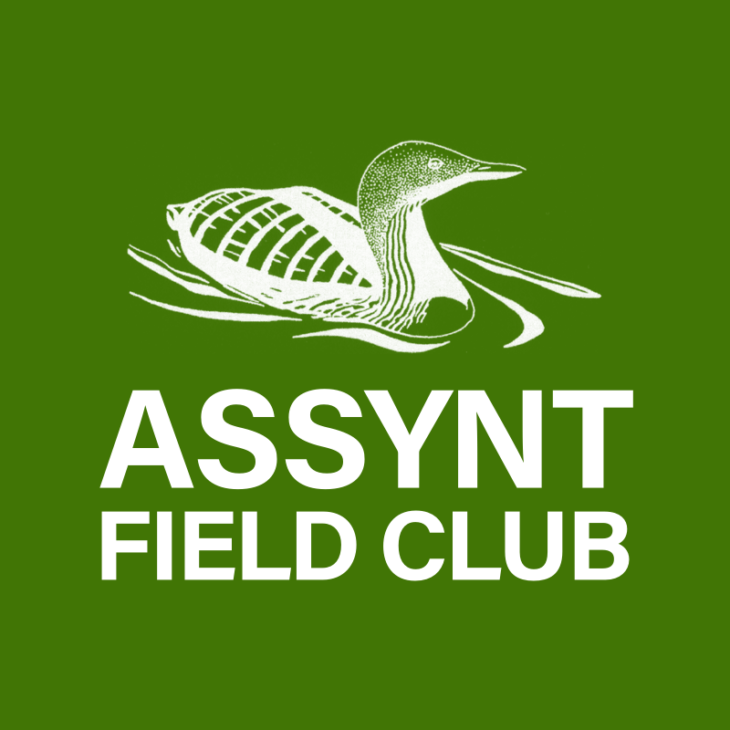What to Spot: May Edition
,
In partnership with Assynt Field Club, we are adding a new regular blog to our website where we hope to be able to give you an idea of the wildlife that you can look out for over the next month. This could be migratory species, insects, etc. They may have hibernated over winter or species that can be seen all year round. We would love to know if you see any of the species listed or have any photos of your encounters.
Assynt Field Club’s website is a great resource to help you understand and identify species seen within Assynt and the general CALL area. There is a photo library as well as current and historical sightings by members of the club, local residents and visitors to the area. Please visit their website for more information, events coming up and to add your sightings to their database. http://www.assyntwildlife.org.uk/
This blog will look at some May species and possible places to see them. There is so much more to see than we can cover, and you don’t need to go far either; whether it’s a walk to the shop or up a mountain, a sit in the garden or on the coast, there is always some nature to find!
So… What’s about in May?
Many birds have been returning to traditional breeding sites for a new year of nest building and egg laying. Seabirds such as Fulmar (Fulmarus glacialis), Razorbill (Alca torda), Guillemot (Uria aalge) and Black Guillemot (Cepphus grille) flock to our west coast cliffs to find the best location, not always without a fight! It often gets very noisy at this time on cliff faces. It can be dangerous to look for the birds on cliffs and you can often get a much better look at them out at sea when they are feeding.
Stoer Lighthouse offers a great place to view birds at sea from a high vantage point and also get the chance to spot cetaceans such as Harbour Porpoise (Phocoena phocoena), Common and Bottlenose Dolphins (Delphinus delphis and Tursiops truncatus) and Minke Whale (Balaenoptera acutorostrata).
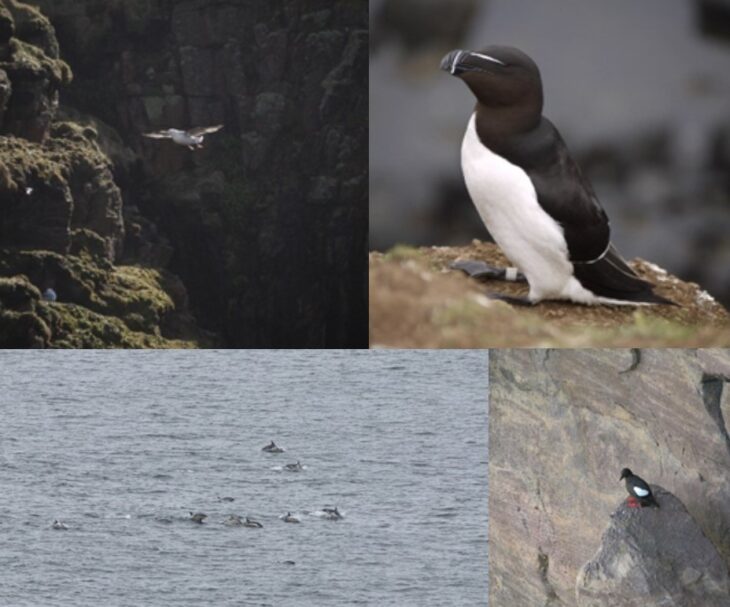
Greylag Goose (Anser anser) chicks start hatching this month. Places to try and see them are Loch an Aigeil at Stoer or Loch na Claise at Balchladich.
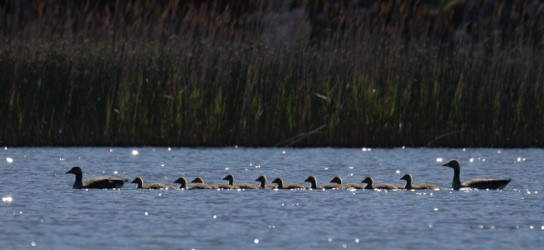
Along our shores waders are also arriving to feed up before moving on to their breeding sites. Wimbrel (Numenius phaeopus) can be seen, and heard, on passage to Iceland from their wintering homes in Africa. The first Common Sandpipers (Actitis hypoleucos), that are arriving here for summer breeding, may be seen bobbing up and down along the water’s edge. Listen for their rapid series of high-pitched whistling notes as they fly. Lapwing (Vanellus vanellus) are another migrant breeder and, in late May, you could be lucky and see one of their recently hatched chicks at sites such as Clachtoll, Balchladich and Isle Martin.
A lot of shore birds make their nests on the ground on beaches or in rough grassland nearby. It is important to watch where you are stepping and to keep dogs under very close control from now to late July. The nests are very well camouflaged and often unseen until you are nearly on top of them!
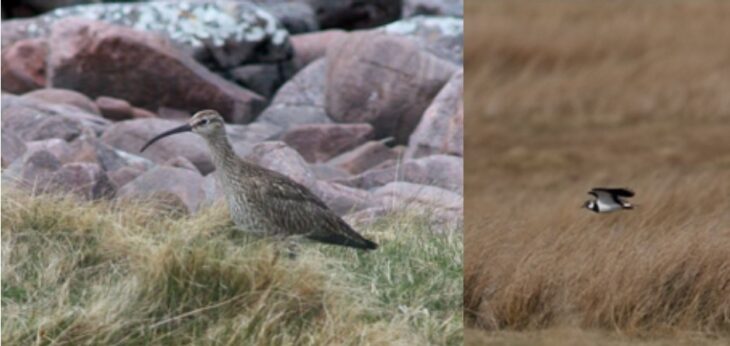
Insects including butterflies are starting to emerge. Some butterflies to look out for include Orange-tip (Anthocharis cardamines) which, as the name suggests, have orange tips to their wings. Peacock (Aglais io) and Red Admirals (Vanessa atalanta) are already flying, having overwintered as adults in sheds and sheltered crevices. Both are large butterflies with the Peacock having distinctive ‘eyes’ on its wings. Inchnadamph and the road to Achmelvich provide great habitats to see these species and more.
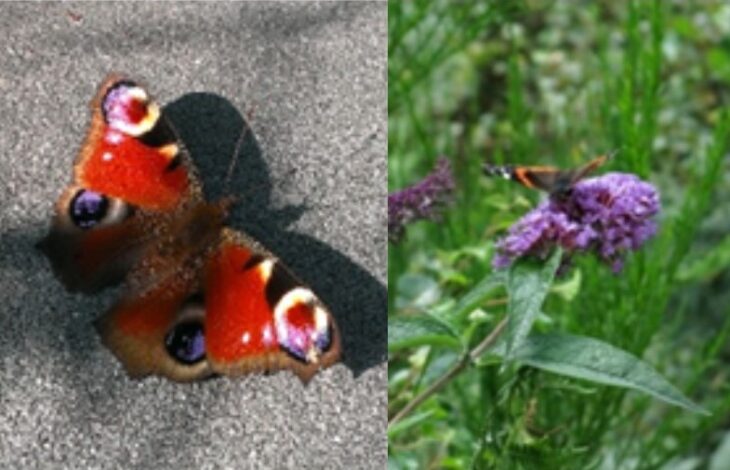
An interesting, almost alien looking insect to spot is the St Mark’s Fly (Bibio marci) with its long, black dangling legs and small fluffy body it is easily recognised. They are often seen ‘suspended’ at head height in groups, bobbing up and down in the breeze trying to attract females. A good spot to look for them is the open wooded area around the pool in Culag Woods, Lochinver. A few are in flight already!
The sunnier, warmer days mean that our reptiles are coming out to sunbathe and the amphibians seek the shade to stay cool and damp. Within CALL we have 3 species of amphibian Common Frog (Rana temporaria), Common Toad (Bufo bufo) and the Palmate Newt (Lissotriton helveticus). In addition, we also only have 3 species of reptile Adder (Vipera berus), Slow-Worm (Anguis fragilis) and Common Lizard (Zootoca vivipara). Its best to see reptiles in early morning or late evening on warm days near rocks or tussocks where they can capture as much warmth as possible. Amphibians are best seen in cooler weather near water, often hiding. Glencanisp offers a great range of habitats for both amphibians and reptiles. Why not try a moonlit walk to look for toads when there is dew on the ground.
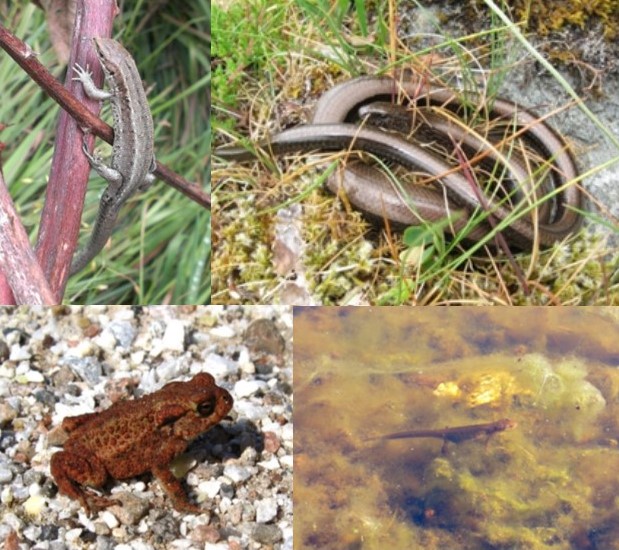
This is just a snippet of the delights to be seen in May. Please let us know of anything you see and if you can get a picture, fantastic!
Enjoy your time responsibly exploring the wildlife of Coigach and Assynt.
